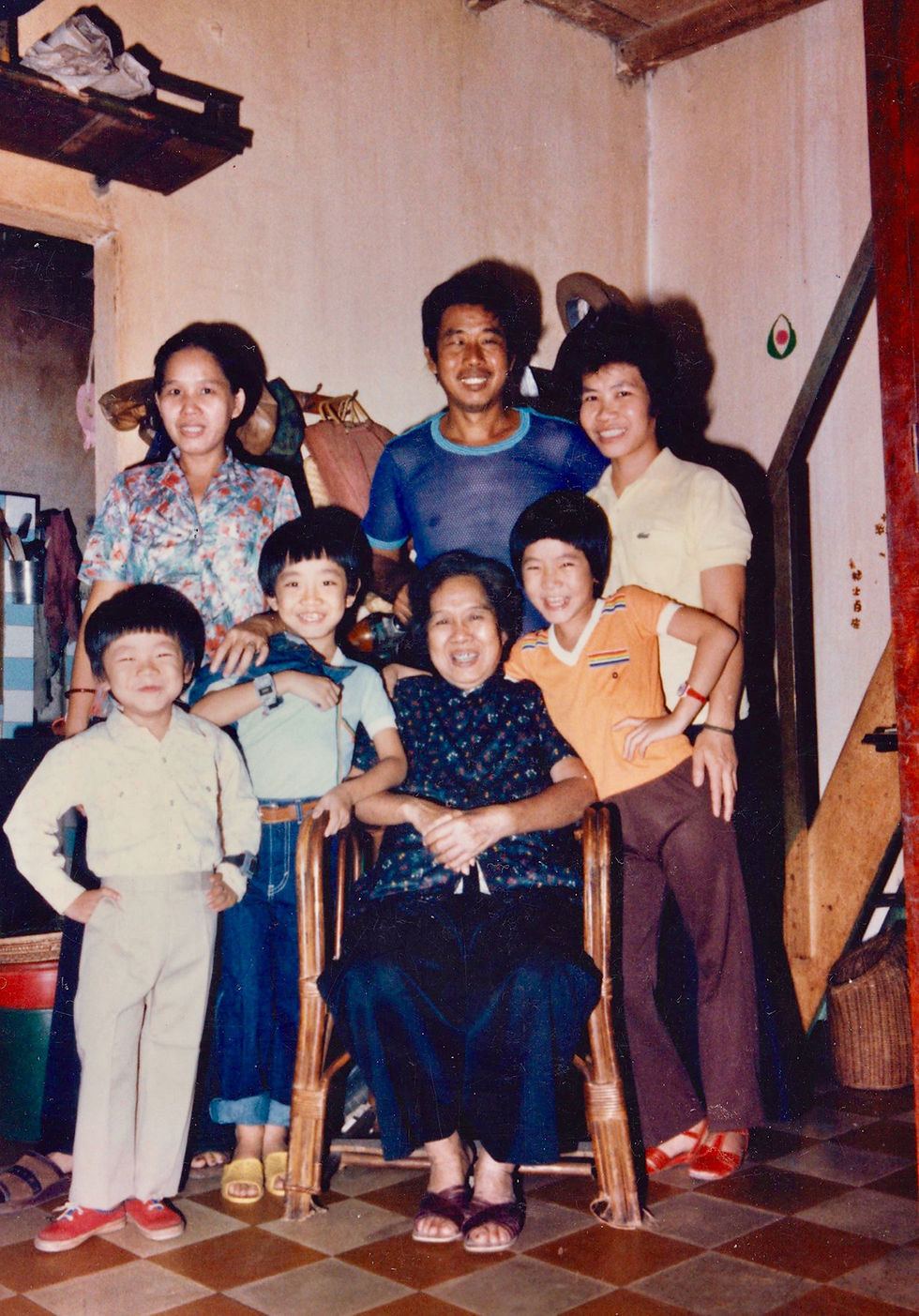Self-Identity and the Politics of Latex: In Conversation with KV Duong
- Gabriella Kardos

- Jul 1, 2024
- 7 min read
Updated: Jun 27
KV Duong was born in Ho Chi Minh City, Vietnam, in 1980. He emigrated to Toronto, Canada with his family in 1987 and moved to London, UK on his own in 2010. His art practice spans painting, sculpture, installation, and live performance. In 2022, KV had a solo exhibition titled ‘Too Foreign for Home, Too Foreign for Here’ at the Migration Museum in London, followed by ‘No Place Like Home’ at the Museum of the Home in 2023, a group exhibition of eight artists from the Vietnamese Diaspora that KV co-curated and artistically led.
Originally trained as a structural engineer, KV enrolled in the MA in Painting Programme at the Royal College of Art, London, in September 2023 to further push his artistic investigations and was awarded the Vice Chancellor’s Achievement Scholarship from Royal College of Art in 2024. He is presently exploring latex as a painting medium.
Gabriella Kardos: You’ve always been fascinated by material exploration, experimenting with concrete, fibreglass, and polystyrene in the past. Why did you turn your attention to latex?
KV Duong: Latex holds a complex web of connotations deeply rooted in the historical dynamics of rubber plantations during the era of French colonisation in Vietnam, where I was born. Latex also embodies a queer individual’s experience, evoking sexual fantasies and intimacy. Laden with symbolism, I’m using this glue-like substance to act as a signifier and protagonist, fusing together materials of importance in my life to help shape and contextualise my identity and ancestral past.
By using latex as a conceptual material to do the heavy lifting of the two main narratives of my life, this has allowed me more freedom of expression to focus on painterly explorations.
GK: How did growing up in Canada as a Vietnamese-Chinese person shape your identity and worldview?
KVD: I moved to Canada with my family when I was seven years old. We were fortunate that there is a sizeable Vietnamese-Chinese community in Toronto where we settled. Despite the culture and climate shock initially, I assimilated well as a young person. It wasn’t until adulthood, travelling abroad to Europe, that I faced scrutiny for my appearance and origin. This realisation of being perceived as ‘the other’ expanded my worldview and fostered a commitment to understanding diverse perspectives, particularly amidst escalating cultural tensions worldwide.

GK: Ethnicity aside, you also had to come to terms with your sexuality. How was your coming out experience, and how did this inform your artistic voice?
KVD: I came out to my close friends and siblings when I was 28, then to my parents when I was 32. To date, the latter is still the most challenging and high-risk situation that I’ve had to navigate in life. I had laid everything on the line and prepared myself for the worst-case scenario, which thankfully didn’t happen. But because I had this mindset going in, everything else afterwards seems like a bonus. This experience gave me the courage to stand up for social injustice and shaped my voice as both a person and an artist.




